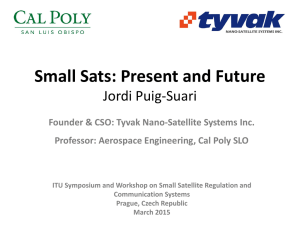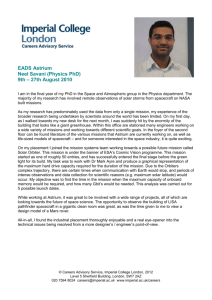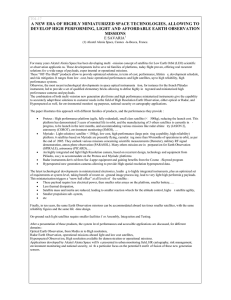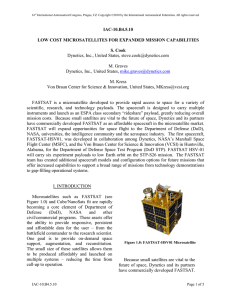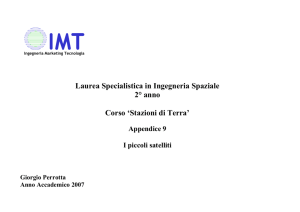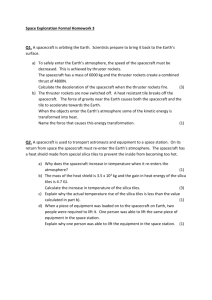Small Satellites and the Devolopment of Space Law
advertisement
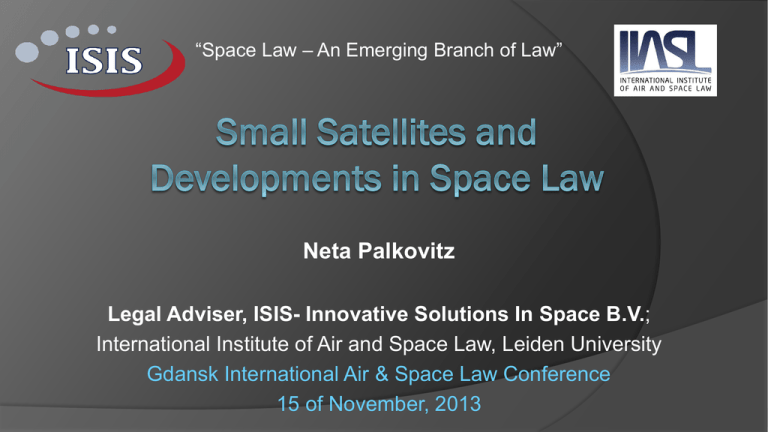
“Space Law – An Emerging Branch of Law” Neta Palkovitz Legal Adviser, ISIS- Innovative Solutions In Space B.V.; International Institute of Air and Space Law, Leiden University Gdansk International Air & Space Law Conference 15 of November, 2013 Outer Space Treaty, 1967 Rescue Agreement, 1968 Liability Convention, 1972 Registration Convention, 1975 Moon Agreement, 1979 The UN Space Treaties: Since then no new binding UN space law treaties, however, soft law instruments were proposed by various entities. In some respects space law is still an emerging branch of law, especially when considering national space legislation, environmental issues, and legal lacunas related to innovative space activities. Developments in Space Law as Ilustrated by the Case of Small Satellites What are Nano-satellites and CubeSats? Small Satellites < 1000 kg 100-1000 kg: mini 10-100 kg: micro 1-10 kg: nano 0.1-1 kg: pico CubeSats: ~10x10x10 cm: 1U ~20x10x10 cm: 2U and so on… Launched as auxiliary payload Size, Use & Philosophy 1 kg spacecraft Education & training Component testing 2-3 kg spacecraft Small research missions Precursor missions 3-10 kg spacecraft low rate communication Network solutions 10-20 kg spacecraft Compact EO missions Benefits Low Cost: accessible to all nations, including “developing countries” Platform for scientific research/educational missions Technology demonstrations Standardization allows for international cooperation Challenges Usually non-manoeuvrable once deployed into orbit “An international network of 50 double CubeSats for multi-point, in-situ, longduration measurements in the lower thermosphere and for re-entry research.” Altitude of ~380 km, below the ISS The satellites are developed and owned by diffenent entities worldwide Carrying identical sensors Study the re-entry process and technology demonstrations Mission control centers in Europe, North America & Asia First project to create such wide international collaboration in outer space First space mission for some participating nationalities Legal Development and Implementation: • National space legislation: State responsibility (Art. VI Outer Space Treaty) General issues relating to liability (Art. VII of OST & Liability Conv.) Registration (Art. VIII of OST & Registration Conv.) • ITU frequency allocation and amature bands (ITU RR) • Space debris mitigation • Air-launches (regulation of suborbital flights) While international space law originated decades ago, “space law” may nonetheless be regarded as an emerging branch of law, especially when considering national space laws and contemporary space activities. The case of nano-satellites illustrates the need to interpret the provisions of the space treaties and relevant national space laws in a manner which corresponds with the use of innovative space technologies. A comprehensive legal regime should address state responsibility, liability and registration issues, in order to clarify the distribution of rights and obligations between private entities in the space industry and the states concerned. Many developments to come! Thank You! npal@isispace.nl
